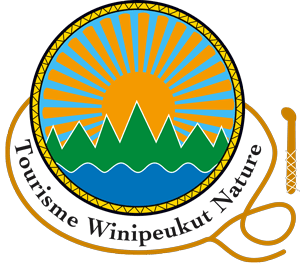In winter, part of the barren-ground caribou herd from George River (which flows into Ungava Bay), whose population is estimated at several hundred thousand, travels over the northern sector of the region, sometimes even reaching the Fermont region at the southern extremes of its migration.
Small fauna is well represented. The snowshoe hare is present, as well as the lynx, its most important predator. The spruce grouse lives in clearings and edges in the coniferous forest, and in sectors ravaged by fire. The ruffled grouse (partridge) is confined to the South near the coast, whereas the red grouse and the rock ptarmigan are present in the North during their winter migration southward.
There are many varieties of furry animals. The presence of beaver, muskrats, river otters and mink is noted in and near aquatic environments. The elusive wolf frequents the forest and open areas. The woodchuck, red fox and striped skunk, which have benefited from forestry and agricultural occupation for the last two centuries, prefer open or semi-open spaces such as clearings, sparse forests, river valleys or lakeshores. Finally, the porcupine, red fox and northern flying squirrel can be found in resinous and mixed forests.
The wolverine, extremely rare today, is confined to the extreme north of the forested area. The pine marten and fisher marten are present in rather small numbers, primarily in northern resinous forests. Occasionally, the fisher marten frequents brush forests and waterfronts. Finally, the ermine and least weasel occupy diverse habitats, particularly those frequented by voles, which make up their menu.
Interior Aquatic Fauna
More than 20 species of fish have been inventoried on the Côte-Nord territory. The most plentiful of these species are the salmonidae, among which brook trout are the most widespread. Landlocked salmon, lake char, arctic char, northern pike, burbot, longnose sucker, white sucker and lake whitefish are also found there. Brook trout, yellow perch, and walleye are found in smaller numbers in the region’s south. Some species such as salmon and sea trout only visit the Côte-Nord‘s rivers and lakes during certain periods of their life cycle.












